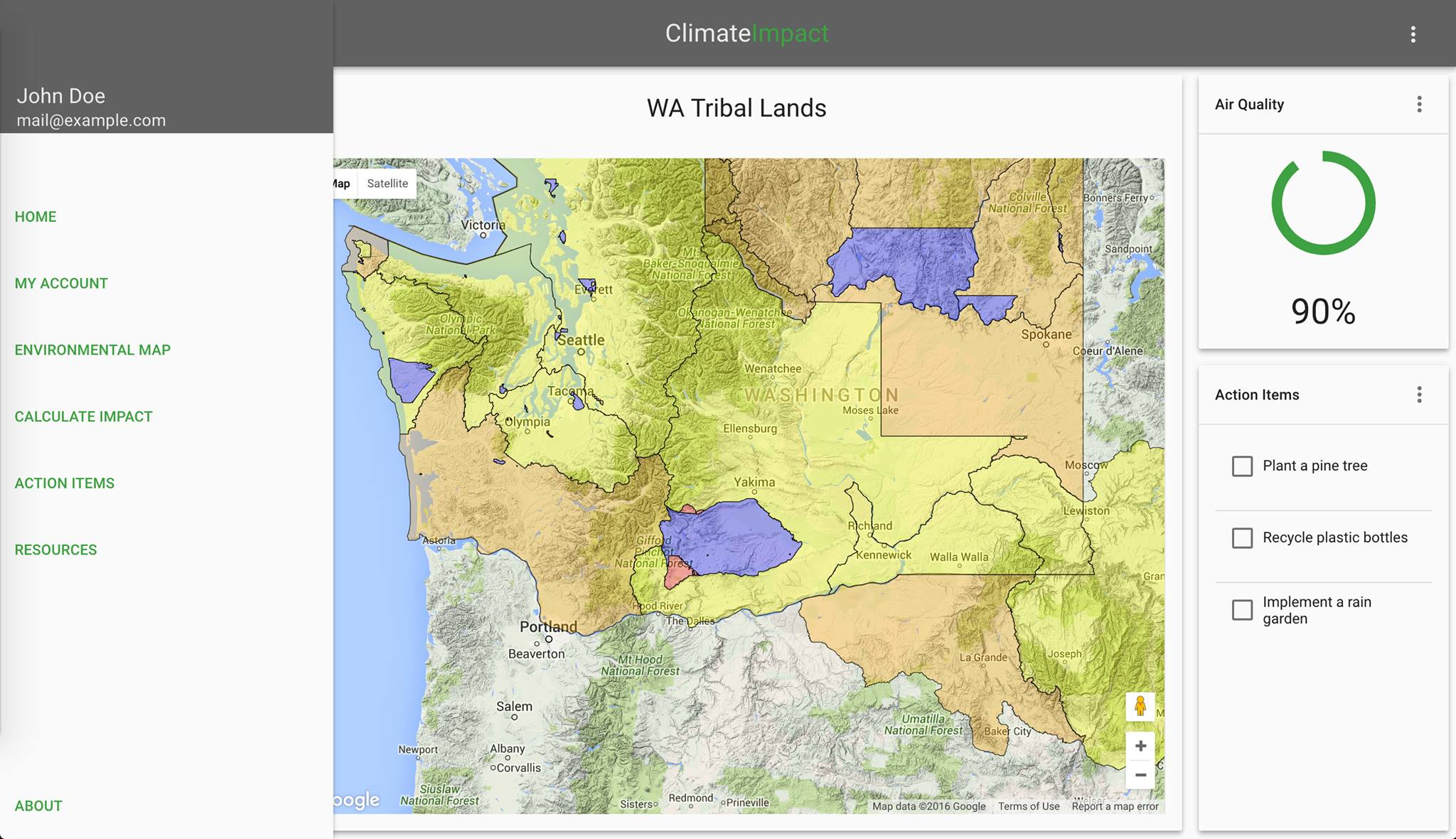ClimateImpact
Background
ClimateImpact was the name of my Capstone project in collaboration with CTERRA and the University of Washington School of Environmental & Forest Science. The goal of the project is to connect the Native communities with scientific data about their environment and to help them make decisions on sustainable actions to take.
My Role
I worked closely with our sponsors from CTERRA and the School of Environmental & Forest Science to determine the design specifications. Our team also collaborated with a group of teenagers from the Suquamish communities in Chief Kitsap Academy to gather the user needs for the tool. I designed, developed and tested our prototypes with the sponsors, other Capstone teams, and the teenagers to ensure the functional requirements are met in the design.

Project Details
Tools: Java (Android Studio), Axure, pencil and paper
Deliverables: User flow, wireframes, interactive prototype on Android, poster design, pitch video
The Problem
The main problem presented in this project is that, today, indigenous communities in the Pacific Northwest are experiencing the effects of climate changes because their livelyhood are tied deeply to their environment. However, existing climate planning tools are designed for and by scientists and professionals and do not meet the navitve communities' values. Thus, they are inefficient when it comes to helping these communities become active participants in the fight against climate changes.
The objectives of the project are to:
- Solve the disconnect between the Native communities and the scientific data
- Design a tool to help them decide on effective actions to take to save the environment
The Discovery
In order to design an application or software for the Native communities, our team first needed to set the scope and target audience group of the project. I proposed setting our target users to the Native teenagers, since they are the building blocks and future of their communities. My teammates and sponsor approved my suggestion, and we decided to design for the teens.
Fortunately, to gain a full understand of their needs and user behaviors, our sponsor was able to set up a design session with the Kinsap Academy founded by the Suquamish tribe. From this session with a group of Native teenagers, our team has gathered and condensed their user needs for the application.
- The tool should be relevant and geared toward their lifestyle instead of providing generic guidance.
- The tool should be graphical with minimum amount of reading and user input or actions required to use.
- The application should provide some forms of social interactions between the community members.
***This is one of the images our team took from the workshop with the Native teenagers. During the workshop, I asked them questions regarding their understanding of climate changes, sustainability, and plans for the community in the future. I then guided the teens into “design their own application” by letting them to draw out features they believe the application should have. I observed and interviewed some of the individuals why and how they design the application the way they did in order to gather notes on their expectation and user needs.

The Ideation
With the user needs, I drafted up our designs through brainstorming, concept reviews and sketching. I created mockups and application flow using Axure, and the mockup screens were annotated to explain how the application works.


My focus was on aligning the design features that meet their user needs to the Native community values while making the application an interactive, self-motivating app that the teenagers will come back to. The specific features include:
- Visualize the environmental data using an interactive map.
- Personalize and perform a list of suggested activities that are designed based on the Native communities' lifestyles and cultural values.
- Track personal carbon footprint and earn points for performing the sustainable activities.
- Gamify the sustainable actions by allowing users to challenge friends and community members into taking a set of action.

The Solution
Through our requirements gathering and designing activities, we developed ClimateImpact, a simple and user friendly mobile and web application that incorporates a carbon accounting tool, visualization of environmental data, and lists of sustainable activities users can perform. In addition to compiling quantitative data from various sources, ClimateImpact places emphasis on the values and traditions of native communities in relation to environmental sustainability.


What makes our application different from the existing carbon accounting tools in the market is that it offers graphical solutions to present the professional data to regular, non-professional users. Unlike the current tools that only calculate the users' carbon footprint once without further actions, our application design takes a proactive approach in which it encourages users to perform activities in competition for points with peers through social aspect. Most importantly, the application incorporates their cultural values into the design, thus making the application useful and relevant to their life.